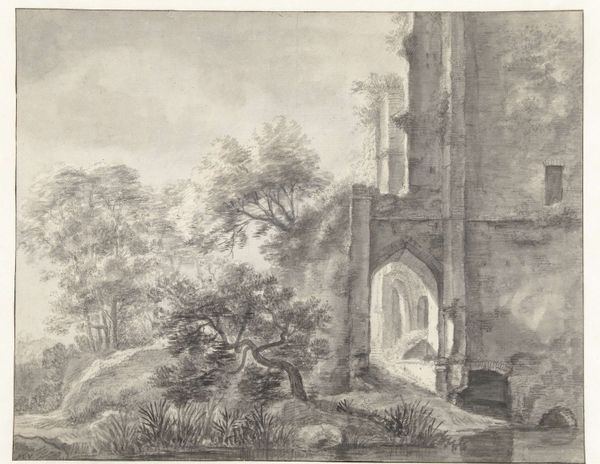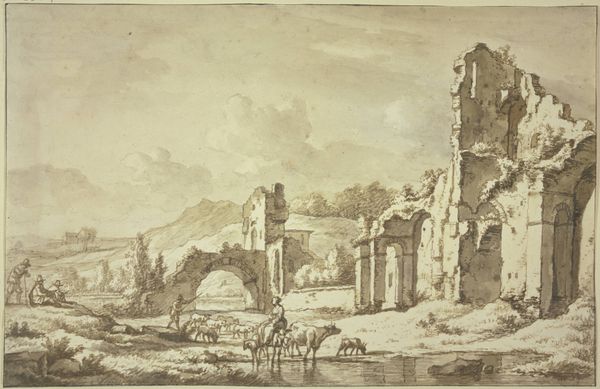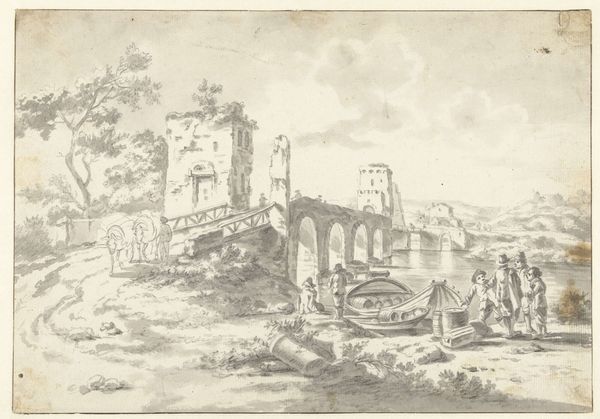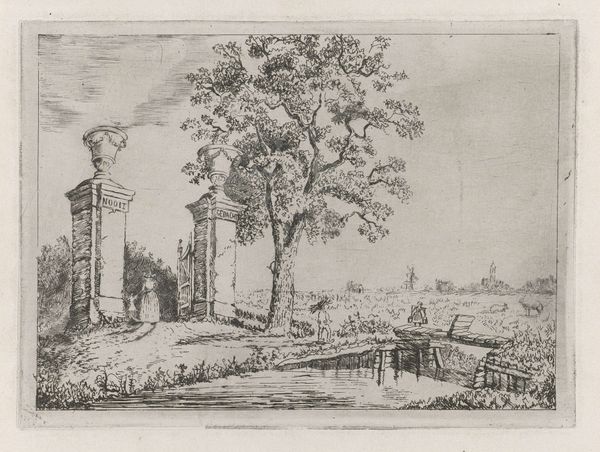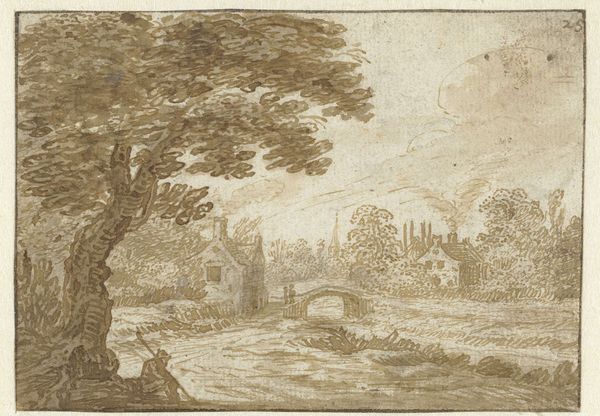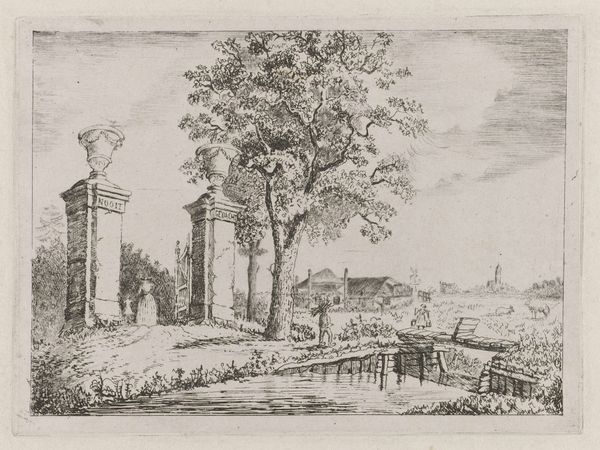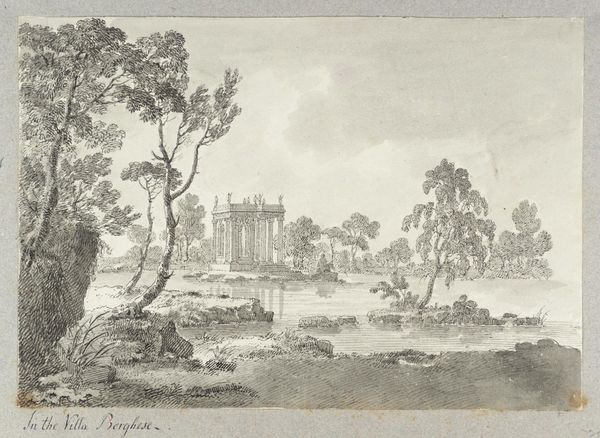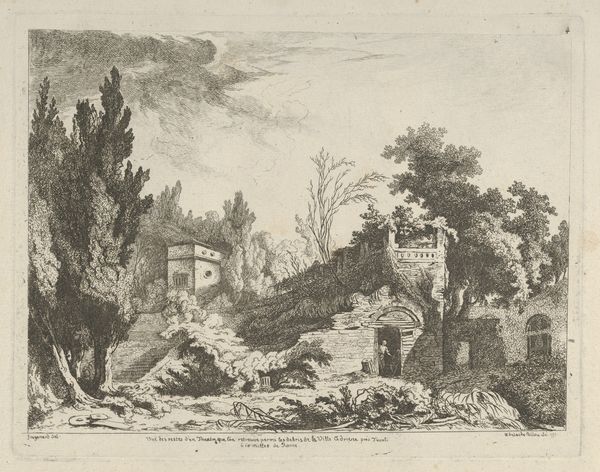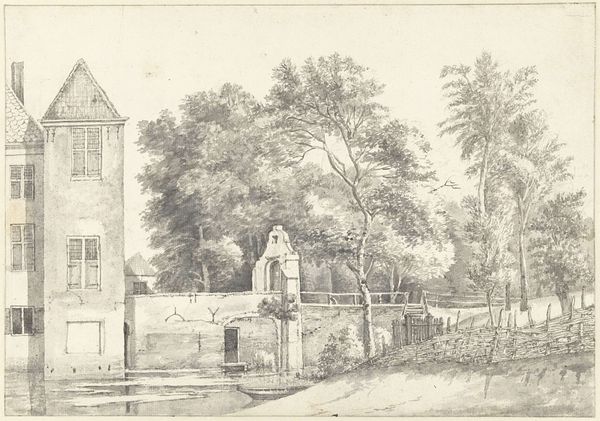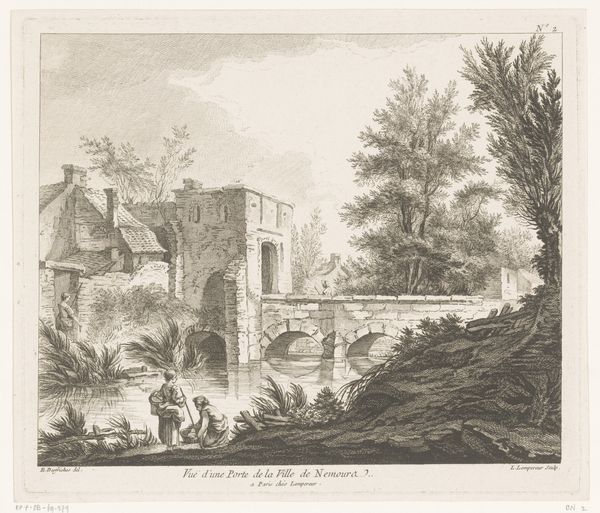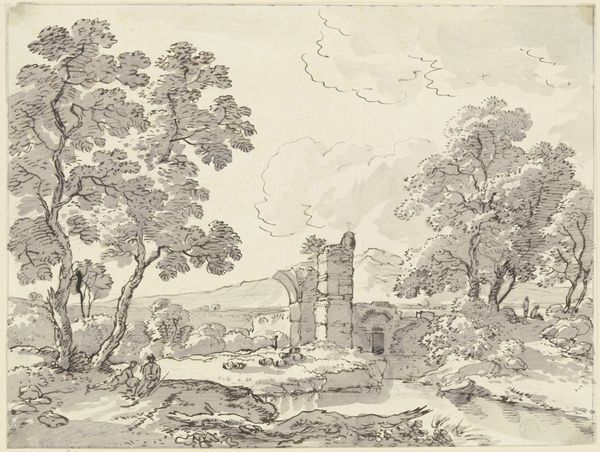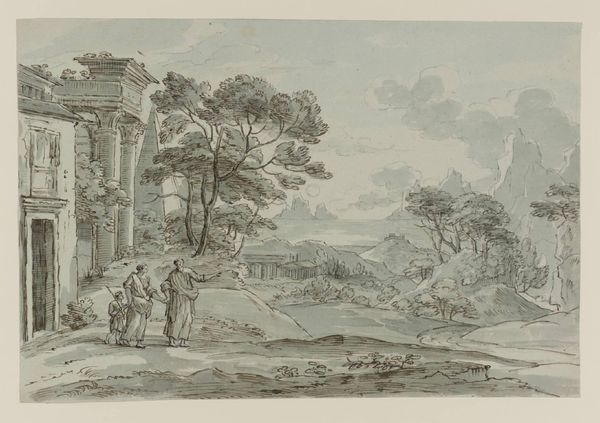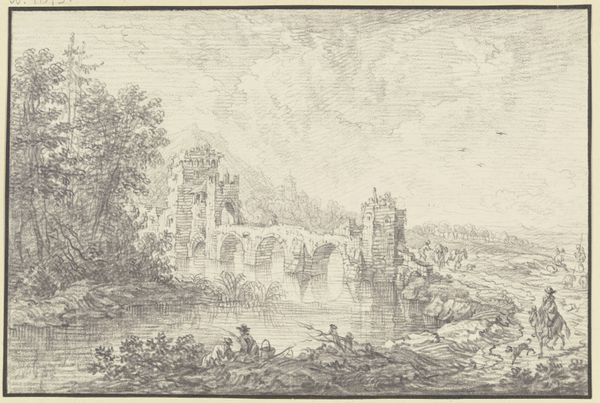
Dimensions: height 299 mm, width 383 mm
Copyright: Rijks Museum: Open Domain
Editor: So, here we have Bartholomeus Barbiers' "Vervallen poortgebouw met brug," or "Dilapidated Gate with Bridge" from 1784, created using etching, pencil, and pen. The sketch-like quality almost gives the ruined architecture and surrounding landscape a haunting feeling, like a forgotten memory. What layers do you see beneath the surface of this scene? Curator: It's compelling how Barbiers juxtaposes the enduring nature of stone architecture with the decay of time. Think about the late 18th century – the Enlightenment's emphasis on reason versus the burgeoning Romantic movement’s fascination with ruins, with nature reclaiming human constructs. This drawing visualizes that tension, doesn't it? The very concept of the “picturesque” romanticizes such decay. Do you think there might be a deeper critique embedded in this seemingly harmless landscape? Editor: Perhaps he is hinting at the impermanence of human endeavors? That regardless of progress, time always takes its toll? Curator: Exactly. And consider this work within the social context of the Dutch Republic. There was rising wealth and increased urbanisation, but also social stratification and anxieties about the past. Are these "ruins" a sign of past glories? Of forgotten power structures? What if this decay mirrors something about their present, even anxieties about the colonial project’s inherent instability? Editor: So, the picturesque isn’t just about pretty scenes, but can act as a reminder of societal anxieties about the future. I never considered that. Curator: Precisely. It shows how seemingly innocuous landscape art can participate in discourses of power, memory, and even resistance. It prompts a re-evaluation of how we read such images. Editor: Thanks, I will look at landscapes differently from now on.
Comments
No comments
Be the first to comment and join the conversation on the ultimate creative platform.
